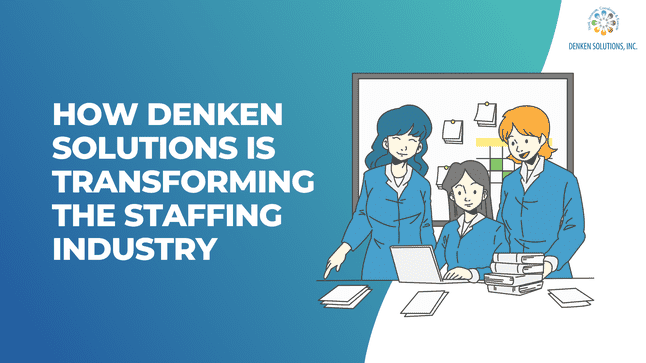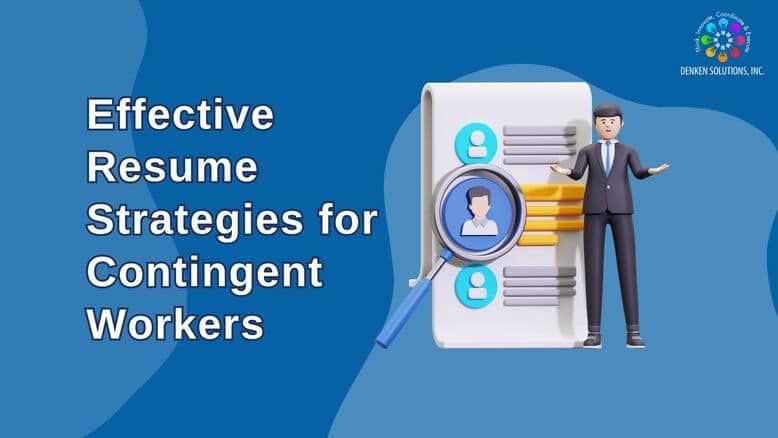Many businesses are embracing contingent talent, such as independent contractors and freelancers, in an effort to have a workforce that is agile and adaptable. This method presents the idea of co-employment, which is surely a component of any sophisticated workforce strategy. When a staffing provider and a client company share responsibilities for the same individual, co-employment situations might present difficulties. However, these dangers are decreased by giving employment fairness and appropriate oversight top priority. When properly handled, the combination of contingent talent and regular employees in one location can produce a positive balance for the talent, the temporary staffing solutions, and the business.
What is co-employment?
When a business uses employees who aren’t directly paid by them but are instead working for a staffing company or another middleman, this is known as co-employment. This may result in both companies being perceived as that person’s employers. Consider this scenario: a freelance copywriter is employed by a staffing organization, but the marketing department of a major tech company guides their deliveries. While the tech company oversees the job, the staffing organization manages the employment. Because both businesses could be seen as that
person’s employers, it poses a concern.
Risks of co-employment to be mindful of:
Fundamentally, the differences in treatment, perks, and overall work experience between traditional employees and contingent workers are the main causes of co-employment risks. This is due to the possibility of a discrepancy between the benefits offered by the staffing platforms and those offered to full-time employees.
These dangers may appear in several ways:
- Legal risks: Contingent workers may file a lawsuit to claim they should receive the same benefits as regular employees if they believe they are being treated unfairly.
- Public relations crises: If temporary workers believe they are being taken advantage of or mistreated, bad press may result. This can undermine public trust and harm a company’s reputation.
- Reputational harm: Co-employment problems can damage a company’s reputation, making it more difficult to draw in and keep top people, both contingent and full-time.
- Operational inefficiencies: Contingent labor may be less productive if they feel excluded or underappreciated. The performance of the team as a whole would suffer, for example, if they were denied access to important information that they require to execute their jobs effectively.
Potential differences in employment standards, including hours, on-site obligations, and salary, are typically the biggest risk. Consequences of this disparity may include trouble attracting and retaining talent. The loss of institutional memory, the cumulative knowledge and experience that support organizational effectiveness and a solid cultural foundation, as well as the expense of turnover or the necessity to repeatedly occupy the same position, come with it.
How to mitigate the co-employment risks?
The good news is that by emphasizing employment equity, treating all workers fairly and with respect, regardless of whether they are permanent employees or independent contractors, these dangers can be considerably reduced. The client company and the staffing firm, which is functioning as the Employer of Record, or EOR, must work together to accomplish this.
How a recruiting company can reduce the risk of co-employment?
To reduce the dangers associated with co-employment risks, staffing companies are essential. The following are some important duties:
- Correct classification:
It’s critical to classify workers accurately. The legal differences between workers and independent contractors can be discussed with clients by staffing firms. Workers must be properly classified according to the type of job they do and the degree of control the client company exercises over them.
- Excellent employee experience:
One way to close the gap between traditional employees and independent resources is to provide competitive benefit packages. Comprehensive benefits, such as paid time off, sick leave, and health insurance, help level the playing field and lessen the inequality that increases the danger of co-employment. This greatly contributes to the contingent worker’s sense of worth and compensation.
- Consultation and education:
Staffing companies ought to serve as dependable consultants, informing customers about the dangers of co-employment and offering advice on optimal procedures. This involves creating plans for the fair treatment of all employees and assisting clients in comprehending the legal ramifications of their behavior.
- Performance management:
Since a staffing company can serve as an EOR, it should give its workers career discussions, performance reviews, and pay increases. This indicates a dedication to their personal development.
- Compliance and record-keeping:
To reduce legal risks, careful documentation, contracts, and compliance with all applicable laws are necessary. In an EOR scenario, the staffing provider can also handle this duty for the client company.
How do companies reduce co-employment risks?
The business is in charge of establishing an equitable and welcoming workplace for all employees, even while the staffing company manages the official employment connection. This comprises:
- Clear expectations:
For employees to understand their contributions, roles, duties, and project expectations must be communicated clearly.
- Fair treatment:
Here’s where the “intangibles” are important. It is essential to treat contingent workers with dignity, involve them in pertinent messages and meetings, and give them the tools they require to be successful. The apparent discrepancy is extremely harmful if full-time employees at that office are able to enjoy the free stuff while contingent workers are not.
- Workplace regulations:
Return-to-office (RTO) regulations ought to be administered fairly to all employees, irrespective of their employment position. RTO regulations that differ can lead to animosity and increase the possibility of co-employment. Based on their stated objectives, businesses must consider how they wish to develop their work location policy. Although some freelancers might not be covered by RTO, the nature of their work may necessitate that they adhere to the full-time employees’ in-office schedules.
How does Denken Solutions mitigate co-employment risks in contingent staffing?
In addition to providing organizations with great flexibility, managing a contingent workforce presents several intricate legal issues, with co-employment risk being one of the most significant.
At Denken Solutions, we understand how critical it is to protect our clients from possible legal compliance issues in staffing while preserving a seamless, legal hiring process.
Here’s how we reduce the risk of co-employment at each level of contingent workforce liabilities:
- Unambiguous employment structures
For contingent workers, we serve as the principal employer of record (EOR) or collaborate with certified third-party providers, guaranteeing that:
- Denken Solutions or our approved partners handle employment contracts, benefits, payroll, and HR compliance; the client does not handle these aspects directly.
- There is still a clear separation between our employment duties and the client’s operational management.
Clients are shielded from being regarded as joint employers under labor regulations by this separation.
- Strong contractual clauses
Denken Solutions makes certain that every contract, whether with clients or independent contractors, expressly states:
- The character of the partnership
- Payroll, tax, benefit, and compliance responsibility
- Clarifications that client business perks, such as stock options, retirement plans, etc., are not available to contingent workers.
Misunderstandings and legal exposure are decreased by this proactive legal paperwork.
- Defined work scope
Through precise project-based or temporary assignments, we assist clients in defining the parameters of a contingent worker’s function.
By doing this, the risks of long-term employee integration into the client’s core workforce, which frequently serves as a catalyst for co-employment disputes, are reduced.
- Instruction and training for customers
We advise client managers on the following best practices:
- Averting direct authority over human resources issues such as payroll, benefits, and disciplinary measures.
- Maintaining work responsibilities and performance management in line with the agreed-upon scope
- HR problems are referred to Denken Solutions rather than being handled internally.
This training further lowers risk by ensuring that the client’s team communicates with contingent workers in a suitable manner.
Conclusion:
Knowing the legal ramifications of co-employment is more crucial than ever as companies depend more and more on contingent labor to remain flexible and competitive. Errors in classification, supervision, or accountability can expose businesses to expensive liabilities ranging from unpaid taxes and wages to legal action and harm to their brand.
Denken Solutions assists companies in taking advantage of contingent staffing’s flexibility without having to deal with the hassles of compliance. We make sure our clients can grow with confidence and remain focused on their core competencies by providing them with clear role descriptions, well-structured employment models, and continuous legal advice.



